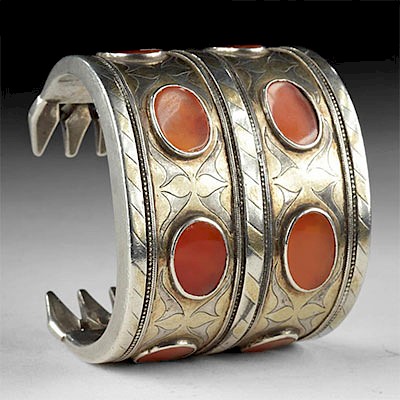Anasazi Chaco Black on White Pottery Pitcher
Lot 134c
About Seller
Artemis Fine Arts
686 S Taylor Ave, Ste 106
Louisville, CO 80027
United States
Selling antiquities, ancient and ethnographic art online since 1993, Artemis Gallery specializes in Classical Antiquities (Egyptian, Greek, Roman, Near Eastern), Asian, Pre-Columbian, African / Tribal / Oceanographic art. Our extensive inventory includes pottery, stone, metal, wood, glass and textil...Read more
Estimate:
$2,000 - $3,000
Absentee vs Live bid
Two ways to bid:
- Leave a max absentee bid and the platform will bid on your behalf up to your maximum bid during the live auction.
- Bid live during the auction and your bids will be submitted real-time to the auctioneer.
Bid Increments
| Price | Bid Increment |
|---|---|
| $0 | $25 |
| $300 | $50 |
| $1,000 | $100 |
| $2,000 | $250 |
| $5,000 | $500 |
| $10,000 | $1,000 |
| $20,000 | $2,500 |
| $50,000 | $5,000 |
| $100,000 | $10,000 |
| $200,000 | $20,000 |
About Auction
By Artemis Fine Arts
Aug 6, 2019
Set Reminder
2019-08-06 11:00:00
2019-08-06 11:00:00
America/New_York
Bidsquare
Bidsquare : VARIETY SALE | Antiquities & Ethnographic Art
https://www.bidsquare.com/auctions/artemis-gallery/variety-sale-antiquities-ethnographic-art-4326
Around the world & back in time - be amazed at the treasures you will find. Antiquities from Egypt, Greece, Italy and the Near East, Asian, Pre-Columbian, African / Tribal / Oceanic, Native American, Spanish Colonial, Russian Icons, Fine Art, much more! All categories, all price ranges... Artemis Fine Arts info@artemisgallery.com
Around the world & back in time - be amazed at the treasures you will find. Antiquities from Egypt, Greece, Italy and the Near East, Asian, Pre-Columbian, African / Tribal / Oceanic, Native American, Spanish Colonial, Russian Icons, Fine Art, much more! All categories, all price ranges... Artemis Fine Arts info@artemisgallery.com
- Lot Description
Native American, Southwestern USA, Four Corners region, found near Sanders, Arizona, Ancestral Puebloan (Anasazi) period, ca. 1150 to 1250 CE. A rare intact, large pottery pitcher, painted in the style most commonly excavated at the great Anasazi city of Chaco Canyon. A handle with a serpent-like motif rises from the shoulder to the rim; the wide neck rises upward from the body of the vessel. Thin white slip coats the surface, which has been decorated with black pigment in a pattern of vertical lines and zigzags that look like lightning. These painted designs are very well done, with tiny embellishments of short, tight lines and a placement that gives the vessel a pleasing, regular design. Size: 5.5" W x 7.25" H (14 cm x 18.4 cm)
Pottery of this kind is some of the most important found in the ancient Southwest. The Chaco Project, the major excavations of Chaco Canyon (today a National Historical Park that is well worth a visit), recovered more of this pottery than any other style. Chaco was the center of the ancestral Puebloan (Anasazi) culture, a vast city of monumental architecture, including massive stone Great Houses of multiple stories and monumental kivas. Roads from Chaco Canyon radiated to outlying settlements for hundreds of miles because it was a religious, social, and economic hub for a vast region. Today many Native peoples in the Southwest connect their own histories to Chaco, seeing it as a stop along their sacred migrations.
Provenance: private New Jersey, USA collection, purchased in 2014; ex-Mark Brady collection, found at Witches Wells Ranch, Sanders, Arizona, USA
All items legal to buy/sell under U.S. Statute covering cultural patrimony Code 2600, CHAPTER 14, and are guaranteed to be as described or your money back.
A Certificate of Authenticity will accompany all winning bids.
We ship worldwide and handle all shipping in-house for your convenience.
#147146Intact, with a few very small chips from the rim. Pigment is in very nice condition with slight wear to some of the white slip.Condition
- Shipping Info
-
All shipping is handled in-house for your convenience. Your invoice from Artemis Gallery will include shipping calculation instructions. If in doubt, please inquire BEFORE bidding for estimated shipping costs for individual items.
-
- Buyer's Premium



 EUR
EUR CAD
CAD AUD
AUD GBP
GBP MXN
MXN HKD
HKD CNY
CNY MYR
MYR SEK
SEK SGD
SGD CHF
CHF THB
THB
















